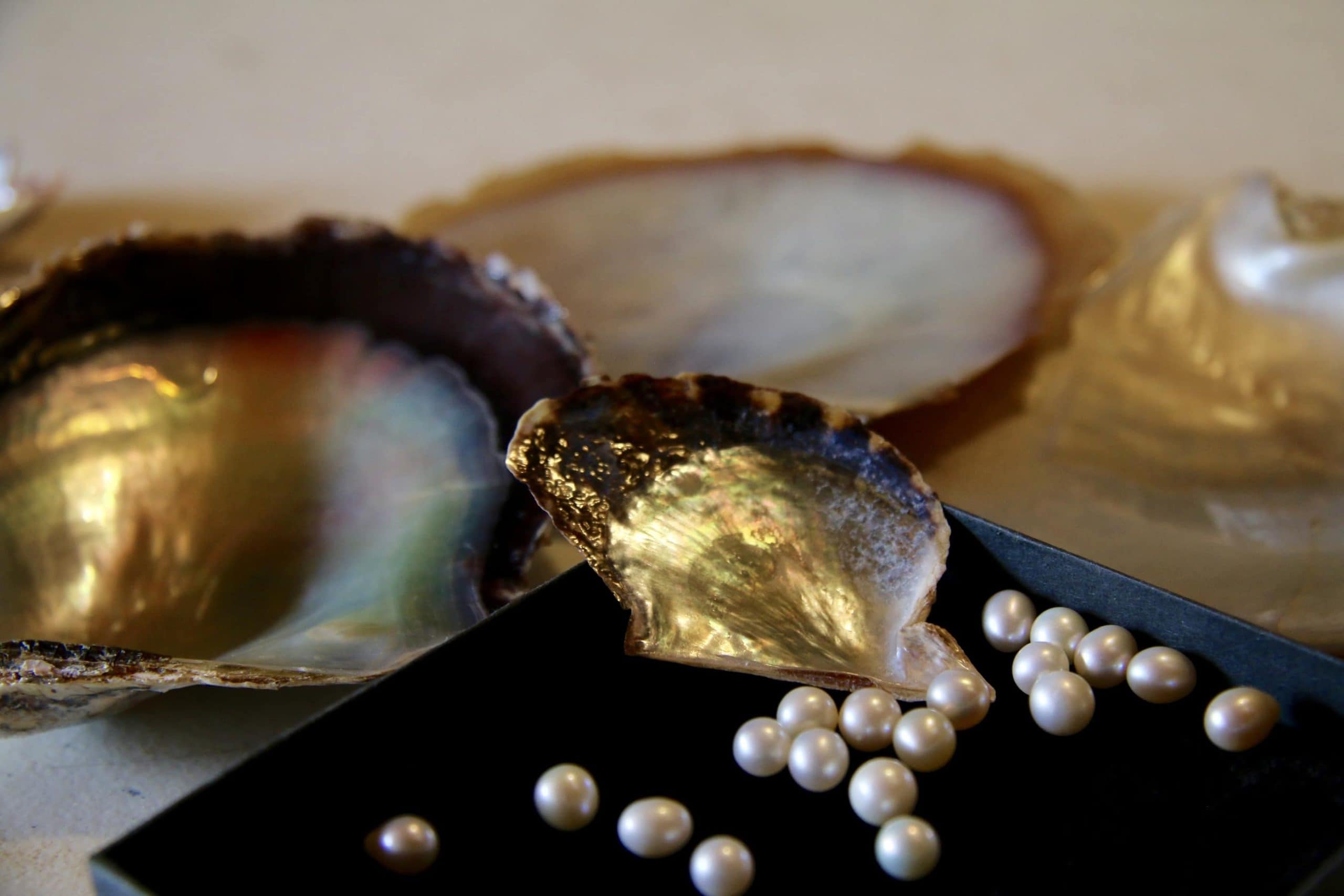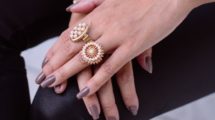Have you ever held a piece a mollusc shell or looked at a pearl and wondered at its lustrous, iridescent surface? You were looking at nacre.
Nacre is what gives pearls and shells their unique, reflective look and makes these products of nature truly special.
But what exactly is nacre? Here’s a quick rundown.
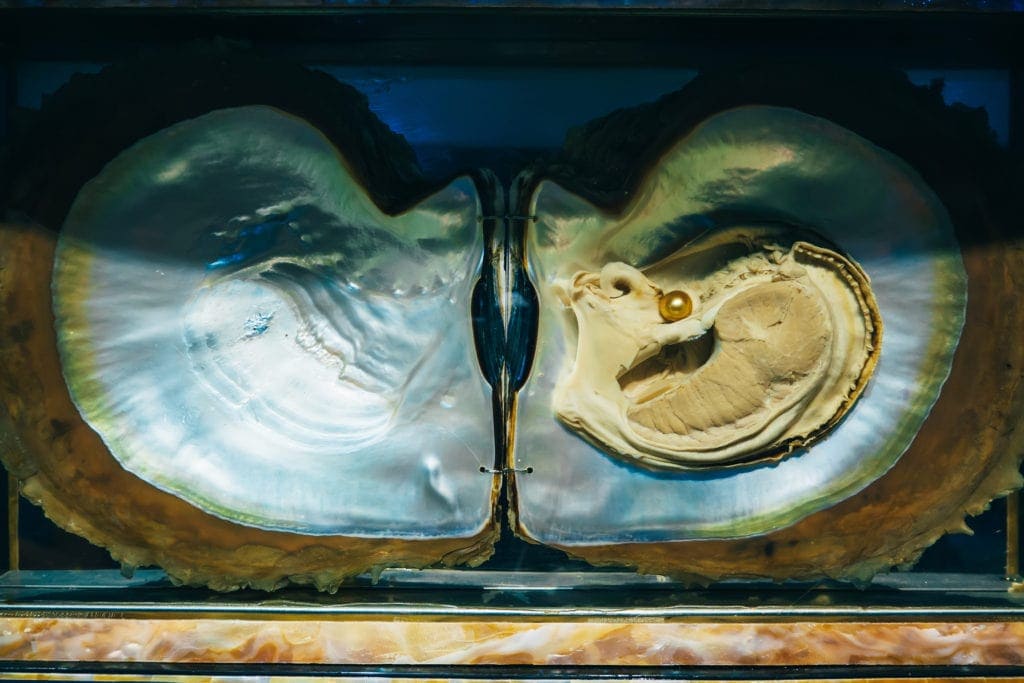
Creatures that Produce Nacre
Nacre is also called mother-of-pearl and can be found on the external surface of a pearl or the internal lining of shells. While the oyster is the most famous pearl producing creature, there are other types that also secrete nacre, create pearls and have lustrous shells. These include:
- Mussels
- Abalone
- Marine snails
- Clams
How Nacre Works
Nacre is a smooth, crystalline substance made of calcium carbonate and an organic protein called conchiolin. This calcium carbonate is made of aragonite platelets, biopolymers and proteins. When combined with conchiolin, the result is a durable, lustrous substance.
The conchiolin works like a glue that holds the crystals together. In the formation of pearls, the mollusc typically first deposits the conchiolin over the bead nucleus which then holds the subsequent layers together.
While it might seem delicate and soft, in reality, nacre is lighter and stronger than concrete and equal to silicon in durability, because of the way it’s composed. The crystals are tightly packed into hexagonal forms, which contributes to its strength.
Nacre on the Inner Lining of the Shell
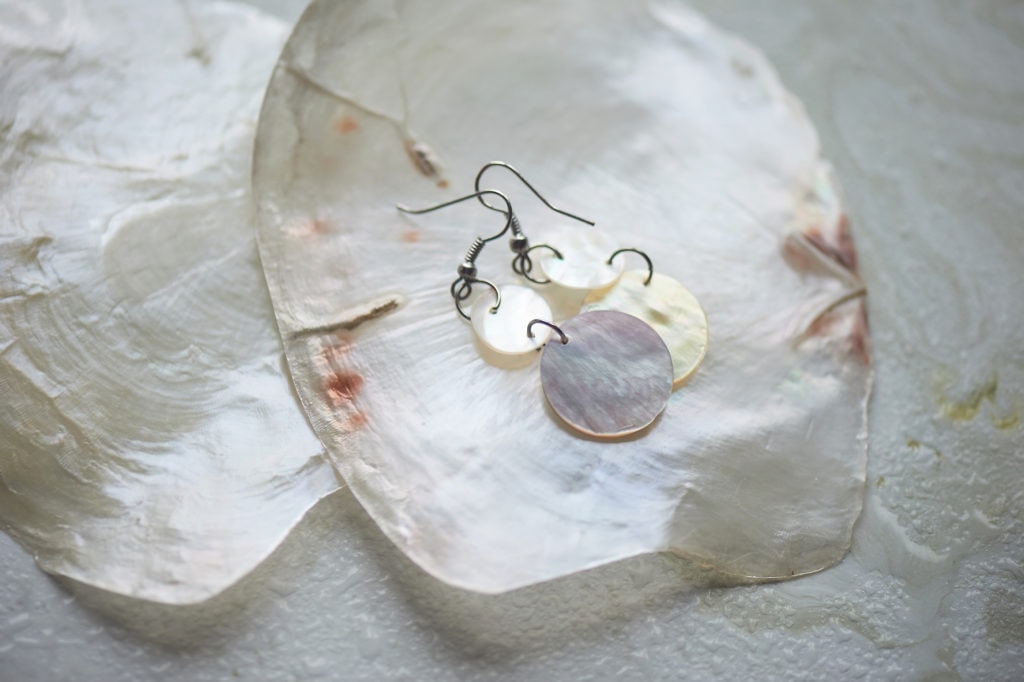
For the inner layer of the shell, the creature continuously deposits nacre to protect itself from parasites and foreign bodies. This is what gives the shell its lustrous, iridescent look. Each layer of nacre secreted onto the shell encases irritants and keeps the creature safe and comfortable.
This is often used to make inexpensive, gorgeous designs known as mother of pearl jewelry. Sometimes, this mother of pearl is crushed, combined with other chemicals and reshaped into ‘shell pearls’. Shell pearls are the synthetic version of pearls on the market.
Nacre in Pearls
For nacre to form into a pearl, layer upon layer must be secreted by the creature until it eventually builds up into a pearl. Take a look at the thousands of microscopic nacre layers below which shows the build up of a pearl.
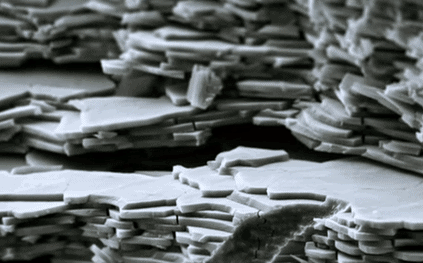
Microscopic view of nacre
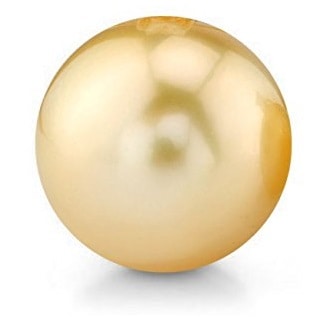
A golden south sea pearl
Different pearl varieties have different amounts of nacre. Saltwater pearls like Akoya typically have thinner nacre layers, as the bead nucleus makes up the center.
On the other hand, freshwater pearls are almost 100% solid nacre, because their nucleus is typically made of tissue. This fact makes freshwater pearls more durable than bead nucleated pearls.
On a side note, Edison pearls, which are a new high-end variety of freshwater pearls, are bead-nucleated and similar to saltwater pearls in terms of the cultivation process.
Why Nacre is Important
Take a look at the luster on these baroque pearls when touched by light. That’s the work of nacre as it interacts with the light source.
Simply put, without nacre, there would be no pearls. The specific characteristics of the aragonite platelets is what impacts the final appearance of a pearl. It gives the pearl its luster and orient.
When you take a pearl and look at it closely, you’ll notice that apart from its body tone, there’s a shimmering, iridescence that can be seen on the surface of the pearl. This happens because of how light interacts with the crystalline layers of the pearl.
As light hits the pearl, it penetrates into the pearl’s layers of nacre. As it goes down, each aragonite platelet that the light comes into contact with refracts the light, breaks it up and sends it back to the surface.
This is what we see as luster and orient. This is what makes a pearl so unique and adds so much value to the gemstone.
Artificial Nacre
Scientists have been trying to replicate nacre in labs and in 2012, were successful in doing this. They were able to copy the natural processes of nacre formation to create calcium-based lab-created nacre.
However, because of the thickness of the nacre, this synthetic nacre doesn’t have the iridescence that natural pearls have and isn’t quite ready to be used as mother of pearl substitute. There’s a high chance that in the future, this synthetic nacre can be used for various beautiful creations.
Nacre Uses
Nacre in pearls is used for jewelry and has been for centuries. In fact, pearls are known as the world’s oldest gemstone so by default, nacre is the oldest material used in jewelry. Mother of pearl is also a favorite material for jewelry designs and is especially loved for bohemian style jewelry.
In addition to this, nacre is used in architectural designs and for other decorative items, such as mother of pearl buttons, jewelry boxes, cufflinks, carvings and inlays for various items.

